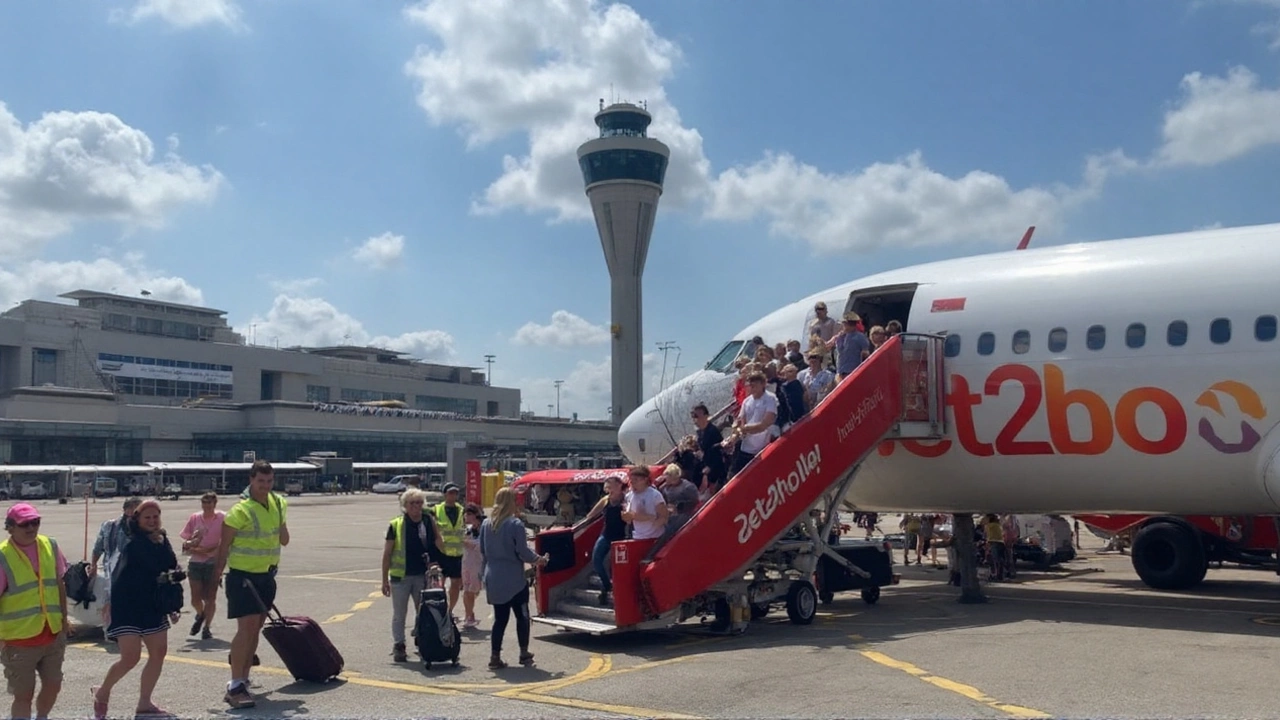Twelve thousand flights in four days. That’s the scale of the UK’s late-summer getaway as the August Bank Holiday 2025 draws near. From Friday 22 August through Monday 25 August, 12,474 departures will lift off from UK airports, offering more than two million seats. It’s the final long weekend before autumn routines kick in, and demand is surging—helped by slightly cheaper fares for many international routes.
Prices are playing their part. Travel search data shows average airfares for the long weekend down 4% year-on-year to £187. The twist is at home: UK domestic fares have climbed 17% to £101 even as searches for UK destinations rose 8%. If you’re eyeing sun-and-sea escapes, that gap makes late-season hops to southern Europe look even more attractive than shuttling between British cities.
What the numbers say
Airports are bracing for a heavy, sustained flow rather than a single surge. Bristol expects its peak to hit on Friday 22 August as families and groups head out early. Gatwick is preparing for an intense Sunday 24 August, with around 900 flights scheduled and peak-hour departures separated by as little as 65 seconds—about the tightest spacing you’ll see in a busy UK operation. Liverpool John Lennon Airport has singled out Monday 25 August as its biggest day of the entire summer.
Heathrow and Stansted will see their absolute peak days a little later—29 and 31 August respectively—but that doesn’t mean a quiet bank holiday. Flows will remain strong throughout the long weekend. One wild card: an ongoing shutdown of Air Canada services. If it stretches into the bank holiday, Heathrow’s daily passenger count could be trimmed by roughly 4,000 per day, offering marginal relief in the terminals but causing headaches for anyone holding an affected ticket.
The demand pattern fits the calendar. Late August is prime time for a final break before schools reopen and offices fully repopulate. Many travelers choose short, predictable city breaks—think Amsterdam, Paris, Barcelona—while others chase last-chance beach weather around Spain, Portugal, Italy, and Greece. International capacity on these routes stays robust late in the season, which helps keep fares in check. By contrast, domestic networks are smaller, and tight seat supply can push prices up despite strong interest.
Operationally, the weekend will stretch the system. Turnarounds are tighter, more departures push against the same morning and evening peaks, and any small delay can ripple through the rest of the day. Gatwick’s narrow runway spacing is a case in point: it’s efficient, but there’s little slack if weather cells or air traffic control (ATC) restrictions force schedules to bunch up.

Delays: what’s likely and how to prepare
This is a Europe-wide story as much as a UK one. Eurocontrol, which coordinates airspace across the continent, flags three hotspots for network disruption: France, Greece, and Spain. France accounts for about 26% of network delays, largely from capacity and staffing constraints within its ATC system. Greece contributes roughly 16%, a mix of staffing shortages and weather-related constraints. Spain’s share sits near 13%, driven by sheer demand meeting infrastructure limits in peak holiday weeks.
Weather is the other variable. Late-summer thunderstorms can pop up fast, forcing ground stops, diversions, or delayed takeoffs. When that happens in already congested airspace, flow restrictions cascade. Add crew duty limits and fully booked flights, and recovery options shrink quickly.
If you’re flying, a few choices can cut your risk and stress:
- Choose earlier flights: mornings are usually more punctual than later departures, which can inherit the day’s delays.
- Pad your connections: if you must connect, avoid tight layovers—especially if your routing touches France, Spain, or Greece.
- Arrive early: aim for two hours before short-haul, three before long-haul; more if you’re checking bags or traveling at peak times.
- Track your flight: use your airline’s app and opt in to alerts; watch airport social feeds for security and parking updates.
- Pack to move: hand baggage only, if you can. If you check a bag, use a tracking tag and put your name and contact inside the case.
- Know the security rules: check your departure airport’s latest guidance on liquids and electronics, and pack accordingly.
- Guard your documents: charge devices, save boarding passes offline, and carry a physical backup if possible.
- Have a Plan B: if a storm or ATC restriction snarls your route, ask about reroutes via less congested hubs.
- Understand your rights: under UK261, airlines owe care (meals, hotels if needed) during long delays and refunds for cancellations. Compensation depends on cause; ATC and weather disruptions are usually exempt.
- Insurance matters: a decent policy can cover missed connections, hotels, and essentials if your bag goes on holiday without you.
For families, a few extras help. Pre-book seats to avoid last-minute splits, pre-order kids’ meals where available, and bring snacks in case you get held at the gate. If you need special assistance, tell the airline and airport well in advance; capacity for last-minute requests can be tight on peak days.
Airport specifics also matter. At Gatwick, check whether you’re using North or South Terminal and confirm where your airline checks in; switching terminals costs precious minutes if you guess wrong. At Bristol and Liverpool, peak queues are expected around the first wave of departures; arriving a little earlier than your normal routine can smooth the experience. Heathrow travelers booked on Air Canada should check status daily and look for rebooking options if cancellations roll forward.
Timing your departure helps. Friday morning and midday outbound waves will be thick with holidaymakers chasing full weekends abroad. Sunday is shaping up as Gatwick’s pressure point, while Monday brings one last push of both outbound and inbound flights. If your schedule is flexible, a late Friday evening or early Saturday departure can sometimes dodge the worst of the queues, though this varies by route.
Once airborne, expect occasional reroutes or holding patterns around weather cells and congested sectors. Crews and ATC try to burn as little time and fuel as possible, but safety comes first. If you’re tight on connections, tell the crew; airlines sometimes pre-arrange fast-track transfers for clusters of misconnecting passengers.
Ground transport will feel the squeeze too. Book parking in advance if you’re driving, allow extra time for shuttle buses, and consider rail where it’s reliable. Rideshare surge pricing is common on peak days; checking black cabs and local minicabs can save time and money during crunch periods.
One last thing: if you can’t avoid a connection through a hotspot country, choose a longer layover and avoid the final flights of the day to your destination. That way, if the first sector slips, you still have options. And if you’re on a single ticket, the airline is responsible for getting you to the endpoint; separate tickets shift the risk to you.
It’s a big weekend, and the system will be near its limits. With smart timing, realistic buffers, and a good handle on real-time updates, most trips should still go smoothly—even if the departure board looks a little too busy for comfort.
